We’re a society of food-obsessed people. We’re fascinated with food trends, with healthy, tasty eating, and recipes we can whip up in a jiffy that make us look like chefs. I wanted to explore the food hype at California’s largest food fair, The Western Foodservice & Hospitality Expo at the Los Angeles Convention Center, which took place from August 19 to 21. Tom Loughran, the Show Director for the event, explained to me why, for the first time, the traditional Western Food & Hospitality Expo included two new venues, the Health Fair and the Coffee Fest.
 “With one badge our visitors get three shows, experience more emerging trends, more ways for entrepreneurs to increase their profits, energize their businesses and engage their customers in unique and memorable ways,” Tom promised. I was curious how over 500 of the leading vendors and purveyors could make enough of an impression to sell their products to the visitors, and how much business and product education could be accomplished in three days.
“With one badge our visitors get three shows, experience more emerging trends, more ways for entrepreneurs to increase their profits, energize their businesses and engage their customers in unique and memorable ways,” Tom promised. I was curious how over 500 of the leading vendors and purveyors could make enough of an impression to sell their products to the visitors, and how much business and product education could be accomplished in three days.
The elephant in the room was rising food prices, as the trend points to healthier food. Tom Loughran agrees and explains: “The problem with healthy, sustainable and organic is the price. The more conventionally produced food items also are going healthier. There’s a trend to stay away from processed or canned foods that are not healthy and may have preservatives in them. Maybe it’s not a healthy food per se, but the manufacturers are much more conscious of the ingredients than they previously were. This leads to an increase in consumer prices.” Is it worth it? Tom Loughran and most of the exhibitors of the Food Expo think so.
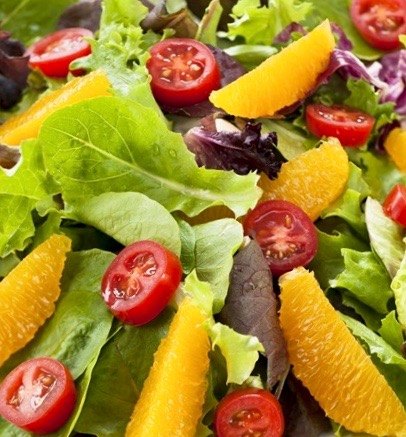
I wanted to explore what the experts have to say about feeding (soon) 8 billion people on this planet without turning all our food into garbage. That’s what biotech companies like Monsanto have been proven to do: mass production with genetically modified organisms (GMOs) and agro-chemicals that are shown to be damaging to the human organism. “Rest assured,” the vendors at the Health Fair told me, almost in unison. “We’ll find ways to do good for humans, the environment and on the taste! We strive for sustainable businesses that will make the planet a better place because we have compassion for all living things.” Their words in God’s ear.
I loved the enthusiasm of many of the exhibitors and tasted my way through health bars, protein powder and bars, organic gluten non-GMO bars, caffeine-induced bars and pieces of dark chocolate. Some tasted good, others not so much. The health bar industry, in my opinion, is widely oversaturated. I liked the gluten-free dough balls and vegan, gluten-free pizza crusts. But I didn’t find a single product that I haven’t seen in health food stores, at Whole Foods or advertised in Yoga magazine.
The movement to preserve food with a nitrogen flush is praiseworthy, but not really new. Banning dairy products by replacing them with artificial milk that contains collagen to make your skin smoother? Fun and good-tasting, but is that the future?

I did enjoy the demonstrations by vegan chefs who revealed their kitchen secrets. It makes sense to eat a plant-based diet that can lower our carbon footprint and aid in the fight against climate change. But that philosophy spoke mostly to the already converted. The meat eaters gathered where the real food porn happened. They got their money’s worth at the original Western Food & Hospitality Expo.
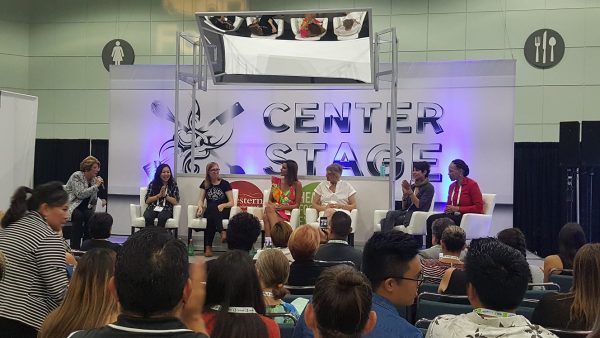
The centerpiece of the expo, the original Food Expo, did not disappoint. Here, the best of “real food” convinced me that the healthy trend didn’t stop at the Health Food Expo but spilled over to traditional nutrition. The original, honey-smoked salmon satisfied my taste buds, as did broiled 100% grass-fed beef from Uruguay, both labeled as healthy foods. Wood-fired pizza crust, potato rolls and bread were seductive carbs, and even the “hot honey” was a raw, wildflower honey infused with GMO-free chili. Of course, the cheese vendors also claim that their product is naturally-aged and made only with real ingredients. I wasn’t sure what that meant, but at least the cheeses on display were flavorful. The booth I enjoyed the most was California’s own Foster Farms, preparing their best pre-cooked chicken and turkey dishes in an inviting, open kitchen. Their statement that their animals are maturing naturally without added growth hormones or steroids and live in large barns that protect them from environmental extremes but let them move freely, gave hope for a sea change in the poultry industry.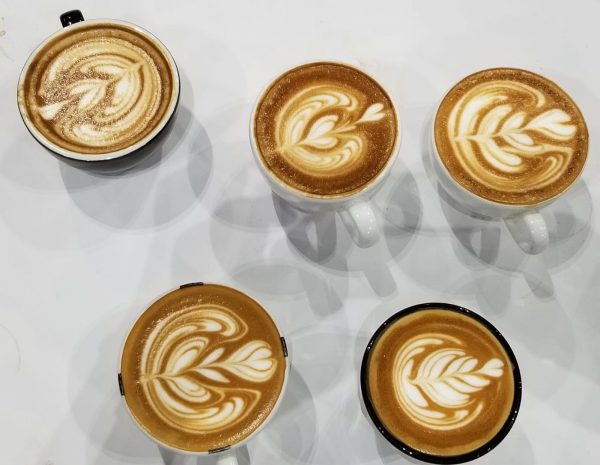
Coffee Fest, the third part of the expo, was crowded in the morning; everyone wanted their coffee fix. In America, the drink of choice is coffee. There were also exhibitors who brewed tea — matcha powdered green tea that tasted best iced, and also fair-trade teas – but they were in the minority. What was new on the coffee front? For nearly two decades, espresso drinks were the ultimate caffeinated luxury, until pour-over and cold brew began edging good old coffee back onto the scene. Cold brews were the flimflam at the show, and since they’re much stronger than their hot brewed brothers, a tiny cup sufficed to give me the shivers. Even the nitro coffees, where cold brew coffee is infused with nitrogen gas that creates a cream effect, did not convince me. The “America’s Best Espresso” competition and the “Latte Art World Championship” contest in the middle of the day showed the artistry that goes into a great cup of hot coffee, and “America’s Best Cold Brew Competition” attracted buyers chasing down the latest trends. For the coffee shop owner and shopper for large chains, the newest equipment – from large espresso machines to smaller appliances – was made attractive by discounts that were only available at the show.
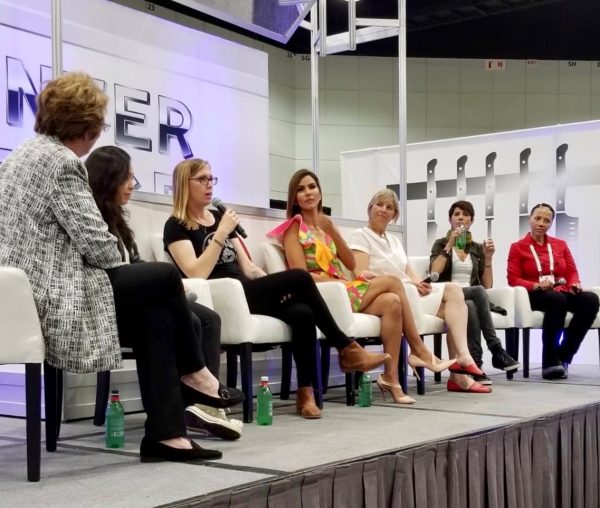
Many conferences and workshops rounded off the event and offered the show participants hands-on experiences and new insights into where their industry is going. Workshops where one could learn about baking with ancient grains or about the fine points of fermentation were popular, as was the designing of smart kitchens and the hottest menu trends. The latest in lighting for Instagram and food delivery by drone also made the cut. Panel discussions, among them a panel of female chefs and restaurant owners, educated the visitor of the trials and errors in the industry and the victories the participants had experienced.
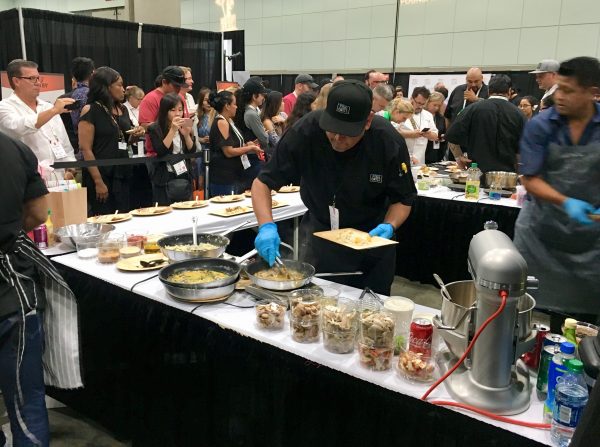
The highlight of the expo was called “Culinary Clash,” where top chefs battled it out in lively cooking competitions between restaurant brands — all to raise money for high school culinary arts programs!
Not only the foodies were served on the grounds. In the Beer, Wine & Spirits Pavilion the visitor was able to explore and sample the latest alcoholic beverage trends and learn how to engineer an innovative beverage menu.
Overall, it was a truly enjoyable show, well put together by exhibit veteran Tom Loughran. Most people were walking through the aisles, smiling. Free food has a way of making us happy.
[alert type=alert-white ]Please consider making a tax-deductible donation now so we can keep publishing strong creative voices.[/alert]
